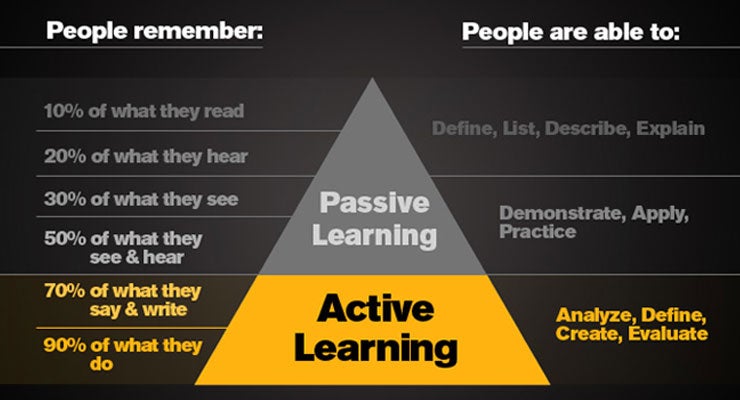How Does Active Learning Support Student Success?
As the paradigm shifts towards learner-centered approaches to instruction, active learning has gained increased attention in higher education circles. You may have even seen images of classrooms that have undergone extensive renovation to become “active learning classrooms.” But what is active learning and how does it support student success?
Active learning, as the name suggests, is an instructional strategy where students take an active role their own learning, participating in activities and, reflecting on their learning. Students are fully engaged in the learning process rather than being passive participants. “Active Learning” is, in short, anything that students do in a classroom other than merely passively listening to an instructor’s lecture. This includes everything from listening practices which help the students to absorb what they hear, to short writing exercises in which students react to lecture material, to complex group exercises in which students apply course material to “real life” situations and/or to new problems. (Paulson and Faust) Active learning can take many forms but generally involves four basic elements which can take place individually, in pairs, or in small or collaborative groups. The inclusion of these four elements make active learning especially well suited to interdisciplinary studies. The four elements include:
- talking and listening
- writing
- reading
- and reflecting
Research indicates active learning works because it involves the active construction of knowledge by the learner. Additionally, learners are more likely to learn when they are with others rather than in isolation. There are a growing number of sites on the Internet with information on active learning strategies. However working in teams to solve a problem, or collaborating on a project, is not enough. What makes active learning more effective than traditional lecture-based instruction is not the activity alone, but how students engage in the task mentally. “Active learning is most effective when the experience supports students to interact with and reflect on the subject matter in substantive ways.”(Cerbin, 2009)
A popular misconception is that active learning can only occur in face-to-face learning environments. Active learning can also take place in large enrollment courses, hybrid courses, and with a little creativity, in online courses. The key takeaway is that in preparing instruction faculty should assess students’ prior knowledge and create learning tasks that engage students in the process of thinking. Read more about Active Learning here:
- Active Learning for the College Classroom
- Pedagogy and Space: Empirical Research on New Learning Environments
- When Students Learn (or don’t learn) from Active Learning Experiences
- Twilight of the Lecture



